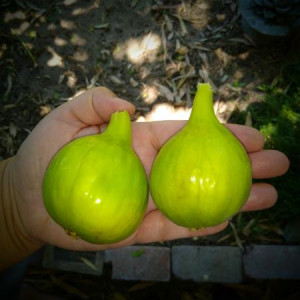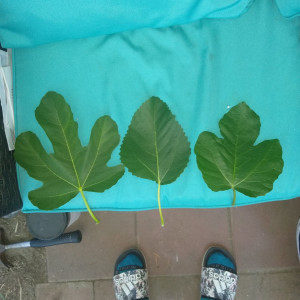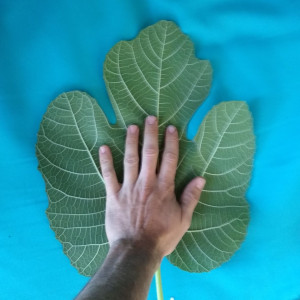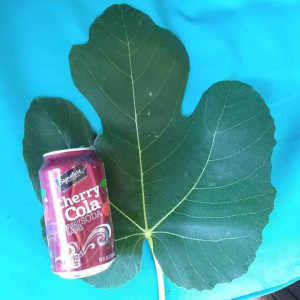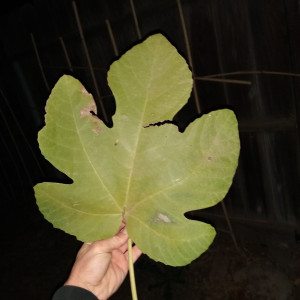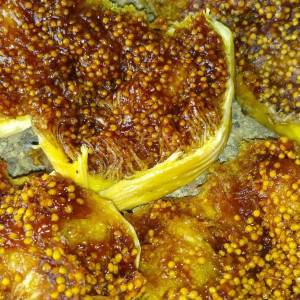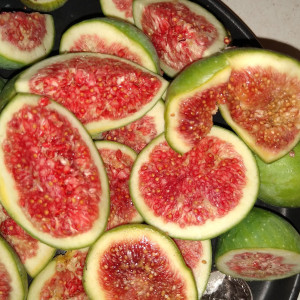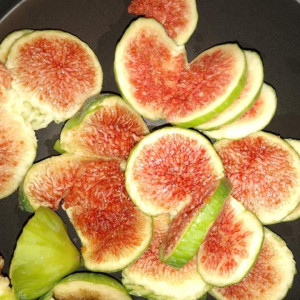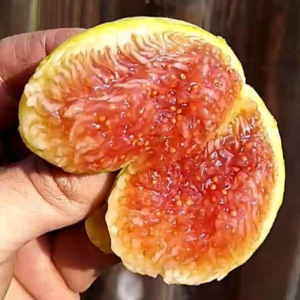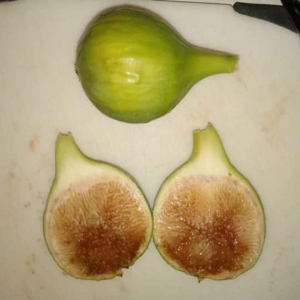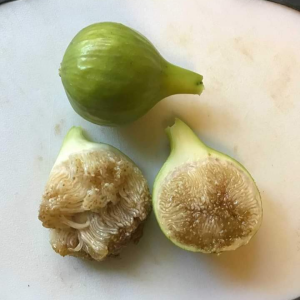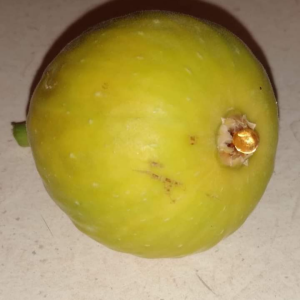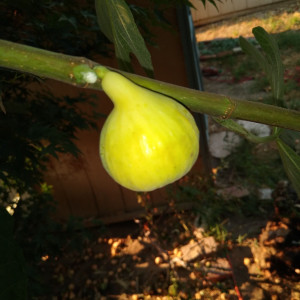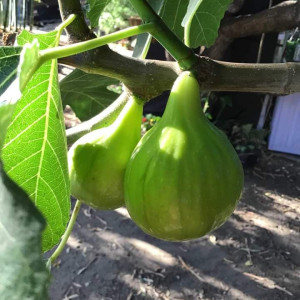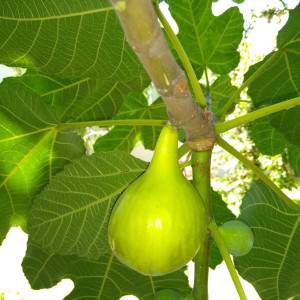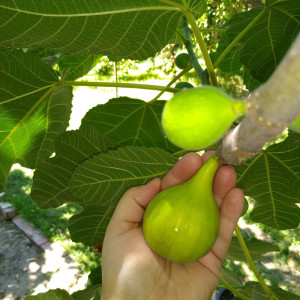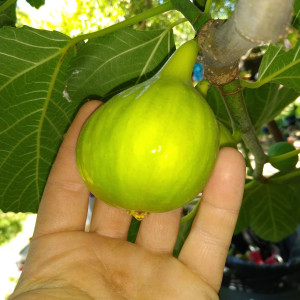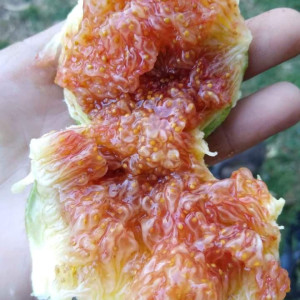This site contains affiliate links for which I may be compensated.
Locke's 1945 HB-YLN
Locke's 1945 HB-YLN Information
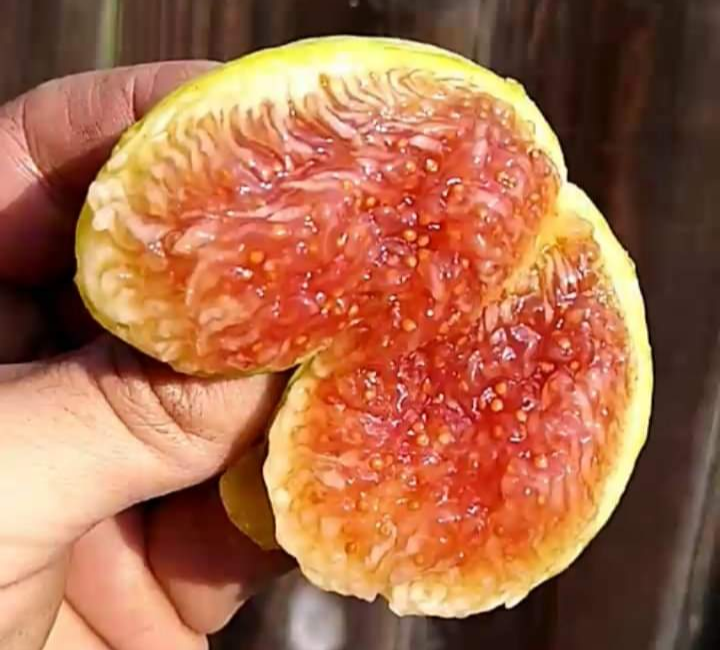

-
Possible Synonyms / AKA:
-
Introduced By:
Robert Locke (Plants On Locke) -
Origin:
California -
Main Flavor Group:
Honey- offers a delicate and smooth sweetness with a warm, golden richness. It brings a soft, floral depth to the flavor, creating a naturally sweet and mellow experience. -
Family Group:
-
Fig Type:
Common - Self fertile and will grow anywhere conditions are suitable -
Cold Hardy:
No -
Container Variety:
Yes -
Easy Rooting:
Excellent -
Main Season:
early -
Availability:
Average -
Breba Crop:
Yes -
Seed Crunch:
N/A -
Eye:
open -
Skin Toughness:
soft -
Fruit Size:
Medium to large -
Rain Resistance:
Average -
Tree Vigor:
Vigorous -
External Links:
https://www.ourfigs.com/forum/figs-home/1206090-lockes-unk?fbclid=IwAR00Hqyntgd9PPxKxTVeRYT88V2wWw-XsIKAFzydTElXjWYej_xes3WUM-Y
https://www.facebook.com/lockeshbyln/
https://www.youtube.com/watch?v=GL2aIGG__8g
https://www.youtube.com/watch?v=n11T3ue2q14
https://youtu.be/rN7ODAx70-o
https://youtu.be/nX0CmqBC2c8
https://youtu.be/EnBx9S79J0s
https://youtu.be/TSmZ9QmZEo0
Description
Please visit Yellow Long Neck for more details.
From Robert Locke, updated 6-8-2021:
Here is a one of a kind fig that was passed down to me from my 72 year old landlord Angela Tassano. Her father, Fredrick Tassano, who immigrated from Italy in the early 1900s, planted the tree before she was born, so this places the tree anywhere from early 1940s-1945. Any older is purely speculation. Her father was a very private man, and cherished his 5+ huge fig trees. He would climb tall latter's, being only around 5'6" tall, and cover the trees in nets. The fruit was taken down to L.A. to be shared with family and friends.
After Fredrick passed, Angela tore out all of his prized fig trees, and grape orchards, to have a modular home set on the property, and this was the only fig tree that she could not manage to kill or tear out with a bulldozer. It grew back and she eventually cut it to the ground twice. She explained that in around a year's time, the tree shoots up to 20+ FT , and she is tired of trimming it. The tree currently is about 35 FT tall, and I asked how big was the tree originally, and how big would it get it left to grow? She said it was bigger than the damn house, and that it must be trimmed or it will canopy the whole back yard.
She has no idea what it is, and could care less at her age. Now the good stuff..
Tree fruits all year and produces fruit into January in some 9b+, despite having no leaves, and appearing dormant. Fruit gets tennis-baseball sized in spring and decreases in size (maybe because tree is so huge?) and internal coloration turns from a golden honey yellow/melted brown sugar-amberish color, to a rich deep blood red in summer, with plum lavender hues. Coloration lightens back to a rich golden honey coloration as fall begins, and fruit fluxes back to a dark luscious red with lavender plum hues into winter.
This is a common self producing variety, but Caprification does occur in my area here in California. The fruit in winter has no visible signs of fig wasps, so something else is happening or fig wasps are hanging out from the end of summer, and caprifying fruit while they develop through winter. This is problematic as fruits developing in mid fall were too small for wasps to enter, and weather too cold for wasps to be out. Fruit was developing is low 30s at night, low 50s in day.
Fruit in spring, while blood red, lacks much viable seed. I believe only a few germinated from the January seed collection, but we're not substantial enough to keep growing. Research is still being conducted. Taste remains consistent year round, despite these anomlies.
Fruit skin is yellow-green in spring, turning more yellow in summer, and weight of fruit makes it droop, and creates a very nice elongated neck. Skin is paper thin, not sticky with Latex , almost too thin (have to pick fruit very carefully as skin will peel off entire fruit if still attached to stem/branch) and smooth, with no crackling. Fruit is very round, and can be eaten/shipped/stocked at around 60+% ripe.
Flavor is an intense honey/berry complex flavor, and sugar content is fairly high. These ferment quickly on the ground in summer, and gives off a very interesting fermented aroma. Fruit eaten in winter unripe was noted to taste very much like a Black mission, but with a complete lack of honey and sweetness. It has the essence of a raspberry/fruit without the sugar. As ripening continues, a rich honey overtone develops.
Leaves get gigantic and are highly variable in pattern and form. Some are spears, 2 lobed, 3-5-8 lobed. Patterns are expressed in older leaves, not just new growth. Some leaves can get around 1.5 FT wide/long, and in fall it was noted that the interior of leaf stems have the complete anatomy of a branch. That's right. A hollow corky center, a hard woody layer around that hollow, a decent Cambium Layer , and finally a lignified waxy skin.
Given the size of leaves, the tree, the fruit, the growth rate, etc, this could variety could be an old school polyploidy experiment, in which mutagenic compounds or radiation, enlarges fruit and plant biomass, as cells are unable to divide and begin to double up in size. Because plants don't have the same organs and systems we do most mutagenic growths or alterations are not a problematic for them. Ficus Carica is known to naturally exhibit chimeric polyploidism.
I cannot find any variety besides three or four that fruit and winter and none of them are this and there's no way in hell this is a Brooklyn White. Frederick Tassano never revealed where he got the tree and he never visited Italy after immigrating here. Myself and several customers have claimed that this is one of the best tasting figs they've ever had in their life, and I personally hated figs before I tried this one.
Tree is very prolific in fruiting and growth, cuttings take off in just a few weeks, air layers have thick monster roots in a month or so. I've successfully planted 13 and 12 FT tall multi-branched air layers, with roots that were the size no bigger than a water bottle or a football. they've been in pots for months and so far there's no top die back.
I've never seen air layers successfully potted at this size making this tree one hell of a fig tree and one hell of an investment.
See videos of fruit on tree and being cut open for inspection here:
https://youtu.be/rN7ODAx70-o
Check out this video of a successfully forced Variegated mutation of the Locke's 1945 HB-YLN here, now labeled (Locke's 1945 VHBYLN): https://youtube.com/shorts/aFUfyk9cYRQ?feature=share
Information floating around states that this variety is more than likely a YLN. As shown in videos and in the images, it may very well be a caprified YLN fig variety. Here is one link you can visit to see this debate and proof of leaves and fruit.
If you'd like your banner to be shown here and throughout Fig Database, send us a message.
Photos Add Your Image
YouTube Videos
No Videos Found





